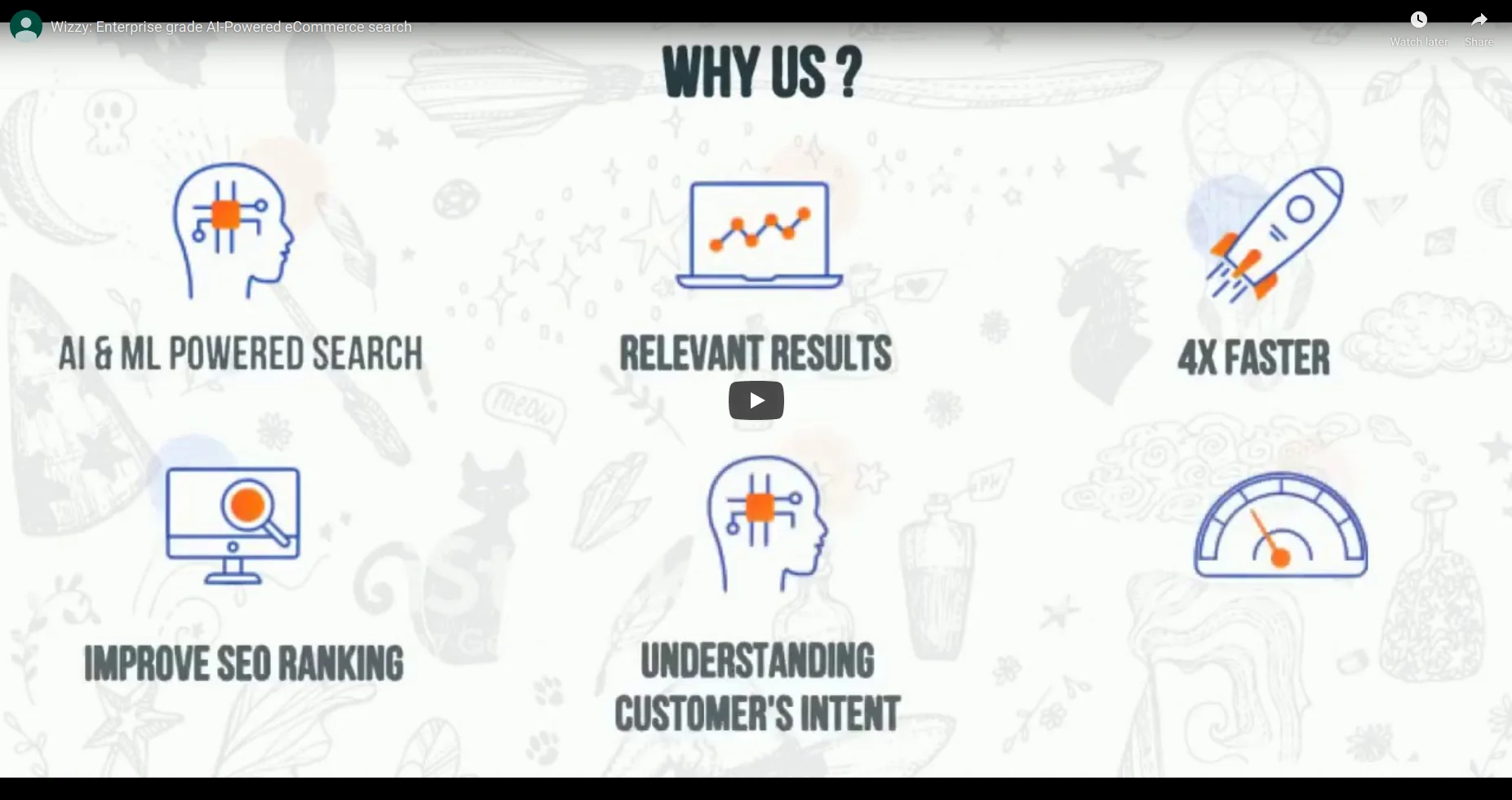| Index |
| ? What Is Site Search Analytics? ? Why Do You Need to Collect & Analyse Site Search Data? ? How Can Site Search Analytics Help Your E-Commerce Business? ? How to Interpret Your Site Search Analytics ? Let’s Start Your Site Search Analytics |
We all know the mantra — better site search results mean a better user experience, which leads to higher engagement.
But did you know that the proper use of site search analytics can directly impact your profits?
Getting the most out of site search analytics on your website is not just a priority but also a necessity. The better you understand how users engage with your website through the site search, the faster you can gauge what they expect from you. If done right, you will see changes in your business growth soon enough.
In this blog, let’s look at what site search analytics is all about, why you need it, and how to leverage it to increase your revenue.
What Is Site Search Analytics?
When a user enters a term into your search box, it’s matched against your database to find the relevant products. These results are returned to the user as a list of results. Site search analytics tracks this entire process to understand how people are using your internal site’s search engine and how you can improve it.
Site search analytics is a data-driven approach to understanding and improving the user experience of your site search. It allows you to track, measure, and optimise how people interact with your internal site search engine.
It helps to quantify how users interact with searches on your site. It shows the number of searches performed and how often people find what they’re looking for. It also reveals how frequently customers use different terms in their queries, which can help you refine your search experience.
Site search analytics has become an essential tool in the digital marketer’s arsenal because it can help you optimise your site navigation, improve conversions and improve brand awareness by understanding what users want.

How Do You Collect And Analyse Site Search Data?
If you’re not collecting site search data, it’s like trying to drive with your eyes closed. You might get there eventually, but it will take longer and be more dangerous than if you had full visibility of what’s going on around you.
43% of the people go directly to the internal search site bar on an online store. So with almost half of your site visitors primarily using your site search, it’s high time we take note of the search data.
Site search data is one of the most critical metrics for any website. It tells you how people use your site, what they want and what they don’t want — and it’s all based on actual user behaviour, not just speculation or guesswork.
If you’ve ever used Google Analytics or any other data analytics tool for your website, the chances are good that you’ve already been collecting some type of site search data. Most web analytics tools include some sort of built-in feature for tracking site search queries.
But there’s a huge difference between ‘tracking’ and ‘analysing.’ Just tracking and collecting data is a futile process if you don’t put it to use. Without analysing, there’s no way to tell which searches are successful or unsuccessful (and why) or whether there are any patterns in how people search on your site. Using intelligent analytical tools to monitor and analyse your site searches can give you valuable insights into your user behaviour.
How Can Site Search Analytics Help Your E-Commerce Business?
It’s no secret that site search engines are the most crucial tool customers use to find products and services on e-commerce sites. What many businesses don’t realise, however, is that there is a lot of untapped potential in their site search analytics data.
Here are five ways you can use your site search analytics data to grow your online store:
Minimise the Obstacles
The first thing we need to address is to reduce the obstacles in the search experience so that people find exactly what they’re looking for as quickly as possible.
Site search analytics can tell you exactly what people want from your website and how they go about finding it. The search data can help identify areas where customers are running into problems as they shop online — like having difficulty finding specific products or being unable to complete an order — so that you can address these issues with changes on your online store.
This will give you an idea of which parts of your website need improvement so that users find what they’re looking for faster, which ultimately helps increase conversions and sales.
You can include several site search features to reduce the obstacles in the customer journey. One way to do this is by using the autocomplete feature on your site search so that when someone starts typing a query, you already have suggestions ready for them based on what other people have searched for before them.
You can also use a site search engine that understands synonymous terms and misspelt words to make your search results more relevant to the user’s intent.
Identify Opportunities for Growth
Site search analytics gives you insight into which keywords prompt users to search your website. You can use this information to optimise your website’s navigation and content so that users can find what they need quickly. This reduces friction in the user experience and helps customers find what they want right away.
You can also identify trends in what people are searching for and how often they’re doing so — both of which can help guide decisions about where to invest resources to grow revenue.
For example, if you see a lot of searches for ‘makeup brushes’ and see a spike for orders in makeup brushes, you could add a link to your homepage leading to this product page. Or, if there are more searches for a particular brand, you can feature them on the homepage for quick access.
Improve User Experience
Site search analytics provides insight into how customers engage with certain pages or sections of your website. And this insight can be used to figure out which pages need more attention or redesigning to improve customer experience.
You can also discover where there are issues or pain points that need to be addressed immediately, like when your site navigation is confusing, or pages aren’t loading as fast as they should be.
This information can be used to optimise the content on different pages of your site, so users can find what they’re looking for. You can design a more efficient navigation structure and find ways to speed up loading times and improve user experience. You can also make smarter decisions about where to spend your time and resources to improve the user experience and increase sales volume.
Increase CTR & Conversions
Site search data is like a window into your website’s soul — it shows you exactly what people are doing when they visit your site, which pages they visit and why, and how long they stay there. Analysing this data can provide insights into everything from customer preferences to pain points in the buying process.
You’ll learn which products are most popular among visitors and which ones could use an update. You’ll also see if there’s any overlap between the terms people use in their searches and those used by customers who’ve already converted. And you can use such insights to tweak your search results, product descriptions, names and images to maximise conversions.
Aid Your Marketing Efforts
Site search analytics is not only great for measuring performance but also for helping you more effectively market your business. By tracking searches and analysing their keywords and phrases, you can identify popular topics that may interest your customers.
You can also use this information to tailor messaging to prospects through email marketing campaigns or social media marketing efforts based on targeted user groups. You can further use it for SEO as well as for onsite blog creation on the most searched terms to supplement your lead generation.

How To Interpret Your Site Search Analytics
You can look at several parameters from the search analytics to understand various aspects of your customers. And here is how you can leverage site search analytics to answer some of your most burning questions.
Are my users finding what they’re looking for?
If the user is immediately clicking on the search results and the journey ends in a sale, it’s a successful search. On the other hand, if the user leaves after looking at the search results, you may need to analyse what went wrong.
Also, having too few results returned for a particular query could indicate that you need to reconsider this search term or better structure your website.
What are my top search terms?
These insights are essential to build on top of your high-selling or high-searched items and maximise the conversions for these particular products. You can use this insight to:
● Feature these products on the homepage
● Feature these products in your email and social media marketing campaigns
● Include these products in your ad campaigns
How can I improve the zero-result searches?
Zero-result searches are catastrophic for an e-commerce website.
Just think about what a salesperson does when you ask for a product they don’t have. Instead, they don’t stop saying no but direct you to another comparable product.
The same goes for your online store too. Analyse your zero-result searches and see if you can direct the users to something relevant. There may be instances where you have the product a user wants, but the search results were null because of a misspelling or any other search error. In such situations, you may need to re-evaluate the site search tool.
What’s the average click depth and how can I improve it?
Click depth is the number of pages that a user goes through in a site search. It’s a direct indicator that the user wasn’t satisfied with the search results on the first page, so they click on the second page, third page, and so on. You can cross-match the click depth with your conversions for specific search terms and display the most bought products on the first page.
What’s the bounce rate?
If a prospect leaves your website after looking through the search results, it can only mean one thing — they haven’t found what they need. So you can dig deep into why it happened and how you can optimise the site searches better to reduce your bounce rate and improve conversions.

Let’s Start Your Site Search Analytics
The first and most essential thing you need to have for a full-on site search analytics is an intuitive and intelligent tool.
Wizzy users have been leveraging the easy-to-use real-time analytics platform with our AI-based site search tool. You can look at various metrics to understand:
● The common search terms
● The bounce rate
● Search volumes
● Null results
● Synonymous search terms
● Direct customer journey from discovery to sales
● User behaviour
… and a lot more.
You can use Wizzy with any e-commerce shopping platform like Magento, Shopify, WooCommerce or even your custom online store.




